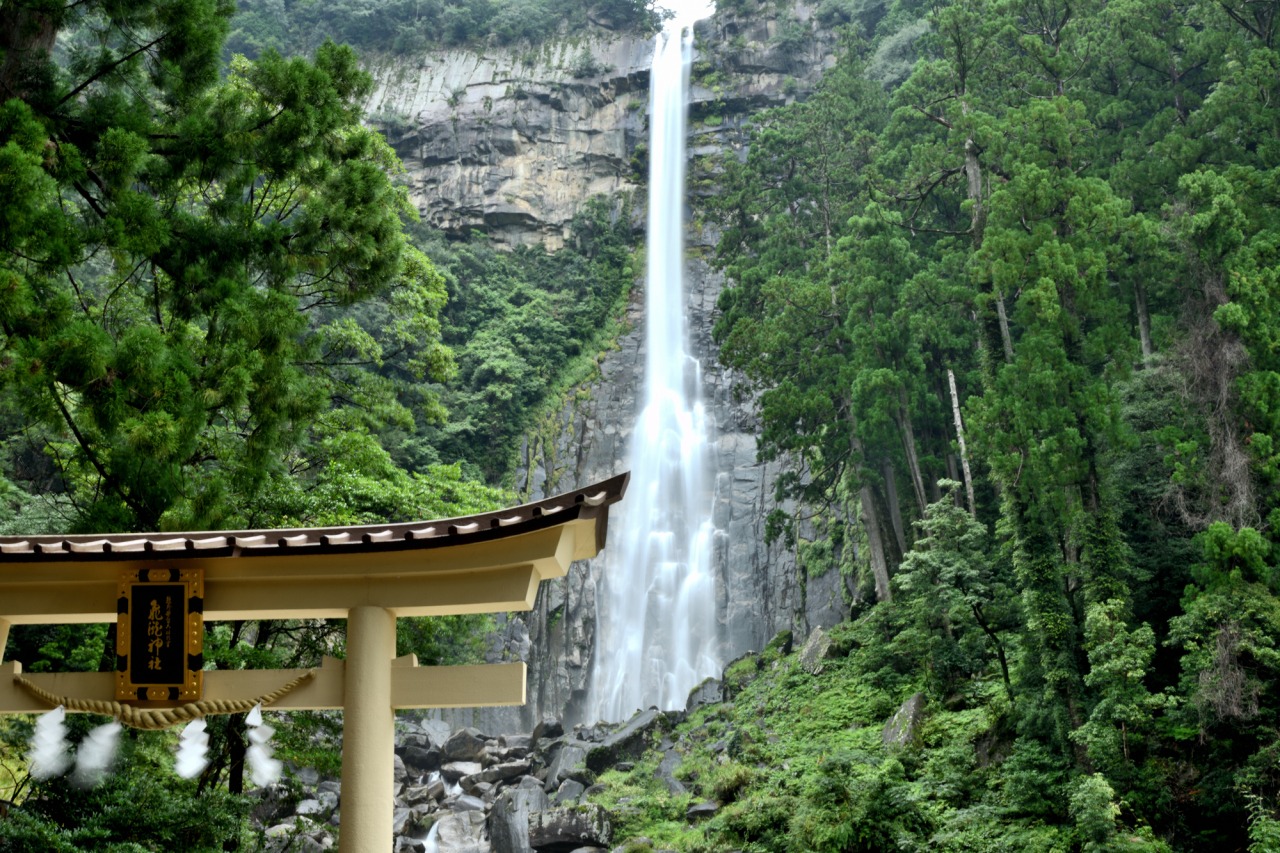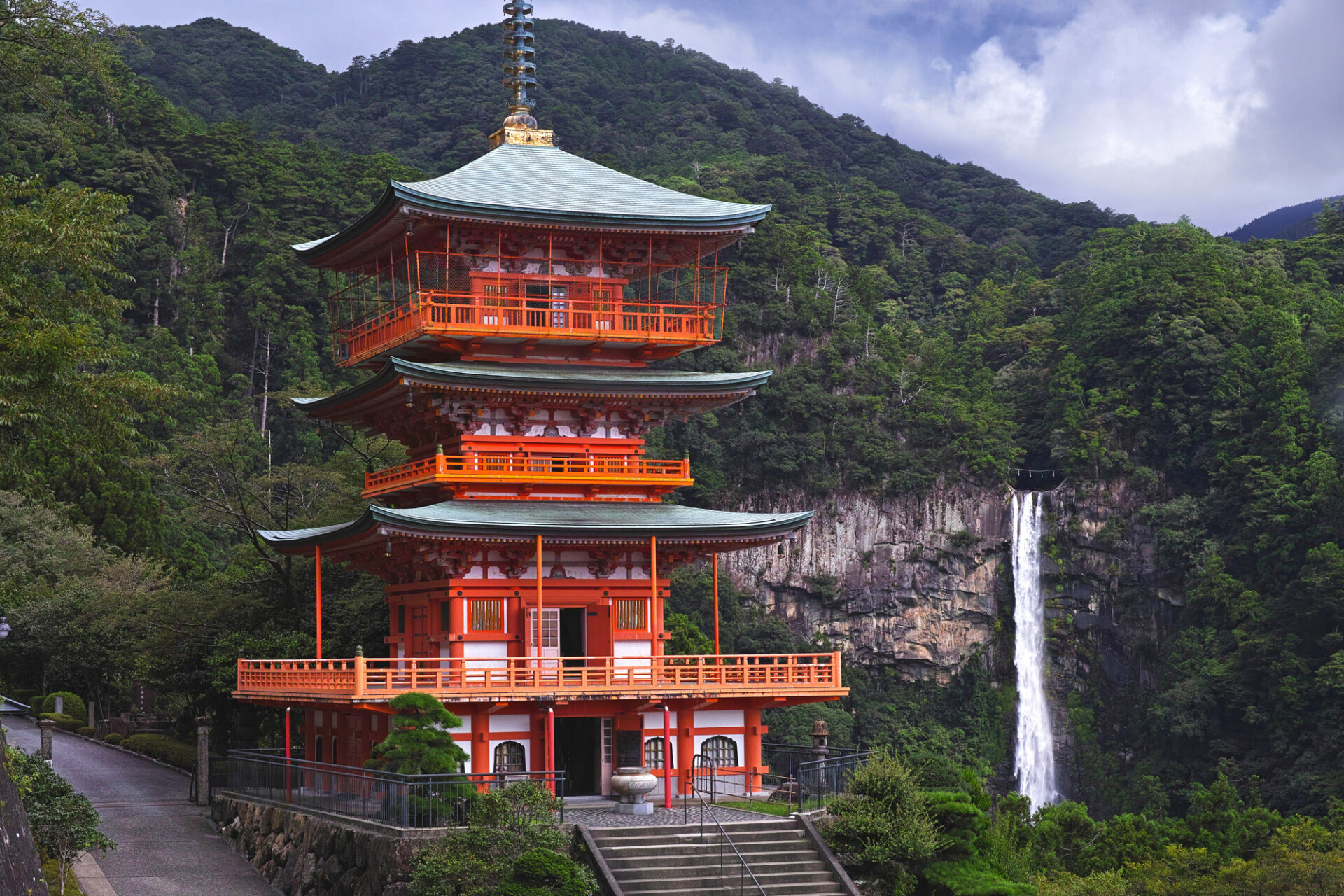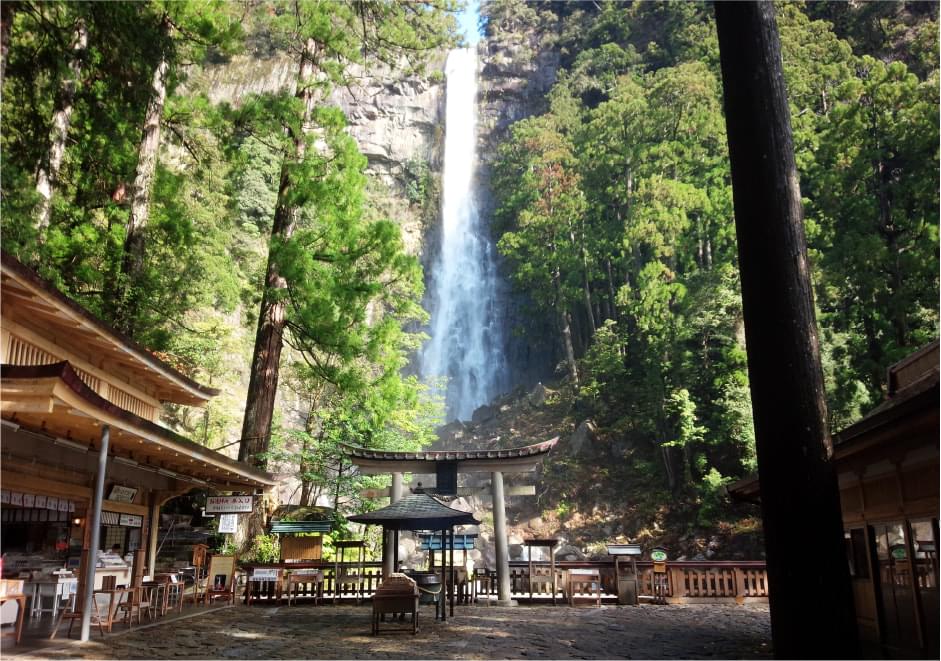


Kumano Nachi Taisha
A sacred pilgrimage shrine set against the backdrop of Japan's tallest waterfall.
A key shrine on the ancient Kumano Kodo pilgrimage trails, Nachi Taisha is part of a UNESCO World Heritage site and offers stunning views of the 133-meter Nachi Falls.
History of the Shrine
Kumano Nachi Taisha is one of the three great Kumano Sanzan shrines, which have been a major destination for imperial and aristocratic pilgrims for over 1,000 years. The Kumano Kodo pilgrimage trails that lead to these shrines crisscross the mountainous Kii Peninsula, and the journey itself is considered an act of spiritual purification and rebirth. It is unique in that it welcomed pilgrims from all social classes, men and women alike, which was rare for its time.
The origins of worship here are even more ancient than the shrine buildings. Before the formal establishment of the shrine, the magnificent Nachi Waterfall itself was worshipped as a powerful kami. The shrine was built nearby to honor this natural deity, and the entire area represents a deep fusion of Shinto nature worship and Buddhist beliefs. The syncretic nature is evident, with the enshrined kami being identified with Buddhist bodhisattvas, creating a powerful spiritual center for both faiths.
The Enshrined Kami
The main kami enshrined here is Kumano Fusumi no Okami, often identified with the great creation goddess Izanami no Mikoto. As the mother of many kami and the Japanese islands, she is a powerful deity of creation and connection. The shrine's association with water and the life-giving falls connects her to the concept of 'musubi', the spiritual power of binding and creating.
This makes her a powerful kami for those seeking help with relationships, finding their true path in life, and fulfilling deeply held wishes. In the syncretic Kumano faith, she is also identified with the thousand-armed Kannon Bodhisattva, representing boundless compassion and salvation, making the shrine a destination for those seeking healing and renewal.
What to See
The shrine complex is located halfway up Mount Nachi. The most iconic view in all of Japan can be found here: the beautiful three-storied vermilion pagoda of the nearby Seiganto-ji Temple (a Buddhist temple, showing the fusion of faiths) perfectly framed against the majestic backdrop of Nachi Falls. This single view encapsulates the harmony of nature, Shintoism, and Buddhism.
The shrine itself consists of several vermilion-lacquered buildings constructed in the classic 'Kumano-gongen-zukuri' style. A giant, ancient camphor tree on the grounds is said to be over 850 years old. It has a hollow trunk that visitors can pass through for a fee, a ritual believed to bring purification and blessings.
Major Festivals
The 'Nachi no Ogi Matsuri' (Nachi Fan Festival), held annually on July 14th, is the shrine's main event and one of Japan's most spectacular fire festivals. The festival represents the annual 'homecoming' of the waterfall kami. Twelve massive, 50-kg pine torches, representing the twelve deities of Kumano, are waved and carried up the stone path to the waterfall, purifying the route with their sacred fire. At the same time, twelve portable shrines in the shape of the waterfall, decorated with fans, are paraded in a dynamic and fiery ritual prayer for a bountiful harvest and vitality.
Support Kumano Nachi Taisha
Your participation helps preserve this sacred site for future generations. Every digital offering contributes to real shrine preservation efforts across Japan.
By making an offering, you become part of a global community honoring Japanese spiritual traditions and supporting the cultural heritage that has been cherished for centuries.